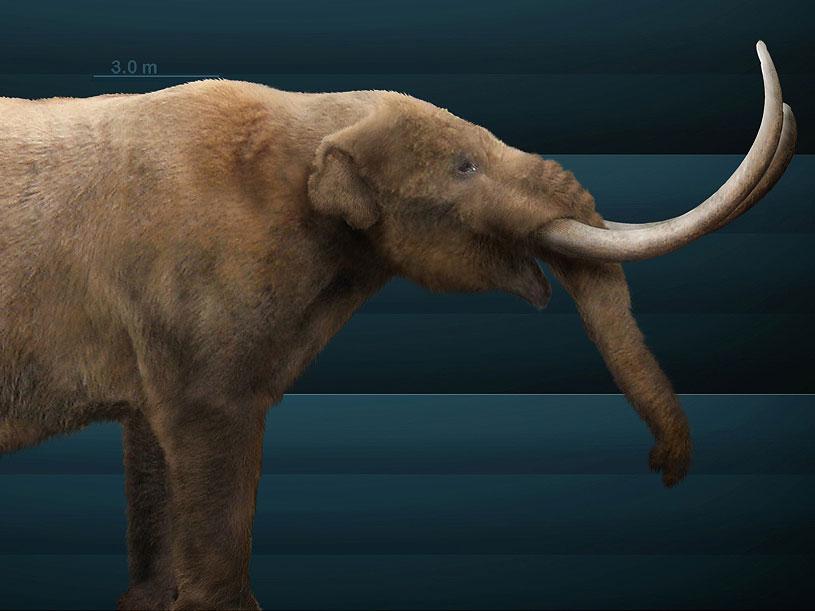The Independent's journalism is supported by our readers. When you purchase through links on our site, we may earn commission.
Fossilised Mastodon bones could rewrite story of how humans colonised the world
Discovery could create 'a paradigm change in our understanding of processes of hominin dispersal throughout the world, including in what now seems to be a not-so-new New World'

The discovery of the fossilised remains of an elephant-like animal on a construction site in San Diego appears to have entirely rewritten the story of humans’ colonisation of the world.
For the 130,000-year-old mastodon bones had been smashed in a way that suggests people had used stones to break into the nutritious marrow inside – even though humans were not supposed to have arrived on the continent for another 115,000 years.
Homo sapiens are thought to have still been in Africa at this time and the researchers said the type of human involved was “unidentified”.
One expert suggested they could be Homo erectus, Neanderthals or Denisovans, but the newly discovered ‘hobbits’, Homo floresiensis, are not thought to be likely candidates.
How they got there is another burning question. They might have crossed the land bridge that once linked east-Asia and Alaska, but it is also possible they sailed across an 80km stretch of ocean.
The remains were found in 1992, but they could not be accurately dated until technological advances allowed this to happen in 2011.
Now the researchers have published a paper about their work in the journal Nature as an exhibition about the findings opened at the San Diego Natural History Museum.
In a video about the discovery, the museum said: “It took 22 years to piece the story of these fossils together. And the picture it reveals just might change everything.”
When the remains were first found, experts from the museum thought they had simply discovered the remains of a dead mastodon.
“But something was puzzling. Many of the bones were strangely fractures or missing entirely,” the museum said.
“And there were several large stones that seemed out of place in the surrounding fine-grained sediments.”
Dr Steve Holen, of Denver Museum of Nature and Science, was brought in to examine the fractured fossils.
“Using femur bones of recently deceased elephants, Holen had conducted two separate experiments in which he demonstrated that a stone used as a hammer causes fresh limb bones to fracture in a distinctive way,” the museum said.
“No known geological process or animal scavenging produces the same fractures in bones.”
Another expert was then asked to examine the stones found near the fossils. “The large stones showed the same abrasions, fractures and scars that only occur in stones used as hammer stones and anvils,” the museum added.
It said the research raised fundamental questions about the human story.
“Who were the humans at work at this site and how did they reach North America? Were they an early failed attempt to colonise a new part of the world?” the museum pondered in the video.
In the Nature paper, the researchers said the dating technique suggested the remains were 130,000 years old, plus or minus about 9,400 years.
“These findings confirm the presence of an unidentified species of Homo at the site during the last interglacial period, indicating that humans with manual dexterity and the experiential knowledge to use hammerstones and anvils processed mastodon limb bones for marrow extraction and/or raw material for tool production,” the paper said.
“The site is, to our knowledge, the oldest in situ, well-documented archaeological site in North America and, as such, substantially revises the timing of arrival of Homo into the Americas.”
An accompanying article by Professor Erella Hovers, an archaeologist at the Hebrew University of Jerusalem, said the “big surprise” was the site's age.
“The finds … could place hominins in the New World more than 100,000 years earlier than previously thought,” she said.
“The authors propose coastal entry, given claims that hominins reached Asian and Mediterranean islands more than 100,000 years ago.
“They argue that, despite sea-level rise during the last interglacial, the distances to the Americas by water were within the capabilities of human populations at that time; the warm interglacial conditions would have facilitated adaptation to the newly discovered environment on land.”
She suggested “late populations of Homo erectus”, Neanderthals or the “elusive” Denisovans may have butchered the mastodon. She noted that Dr Holen and colleagues “do not consider the insular Homo floresiensis as a probable early coloniser of America”.
“What happened after these hominins reached the Americas? The archaeological record is silent until much more recent times,” Dr Hovers said.
There have been other suggestions that humans were present in the Americas before 15,000 years ago, but the evidence has been inconclusive.
But Dr Hovers said: “The evidence from the Cerutti Mastodon site has been rigorously researched and presented, and might be more difficult to refute, even though the proposed hominin narrative derived from these data has some gaping holes that need filling.
“Time will tell whether this evidence will bring a paradigm change in our understanding of processes of hominin dispersal and colonisation throughout the world, including in what now seems to be a not-so-new New World.”
Join our commenting forum
Join thought-provoking conversations, follow other Independent readers and see their replies
Comments